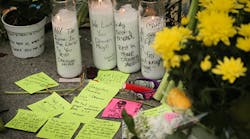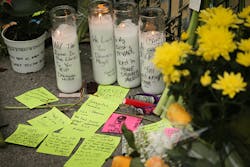36 Deaths and Counting: Why the Ghost Ship Tragedy Should Haunt Safety Advocates
There is a reason why we have building, zoning and fire codes: Safety. Most fire and building codes were written to protect residents, workers and the general public from tragedies like the one that occurred at an Oakland warehouse on Dec. 2.
‘Tis the season… Parties, holiday events, art shows and sales, concerts. But how safe are the buildings in which these events are held? As the recent tragedy in Oakland, Calif., shows us, we might be taking our lives in our hands and not even know it.
Here in Cleveland, where I live, there has been ongoing tension between artists and art galleries, event sponsors, building owners, city officials, city and fire inspectors and neighborhood safety advocates. At issue are spaces being used as entertainment venues that do not meet city building, zoning or fire codes.
Often these spaces do not have occupancy permits, which are issued to businesses by the city and spell out the legal occupancy of the building or space, based on exits, parking, the existence of sprinklers, etc. Or, in the case of warehouse buildings, they have occupancy permits issued when they were used for storage but that do not take into consideration new uses as galleries, residential spaces or entertainment venues.
Many of these spaces were built to hold a handful of workers, or perhaps a few customers if they are storefronts. They do not have sprinkler systems; they do not have enough exits to handle large crowds; they were not built to today’s standards with fire walls and flame-retardant materials; they are used to store a lot of flammable materials like paint thinners and paint. Often, the spaces are used as live-work spaces, even though they are not zoned for that use. Often, the events and openings held at the spaces involve alcohol use, even though temporary liquor licenses (which require event planners to have security on site) were not applied for or issued by the state.
Artists, event promoters and gallery owners claim that these spaces are necessary to provide a relatively inexpensive place for art, music, theater, etc., to thrive. Artists and musicians often don’t have the means to set up shop in real estate that is equipped with pricey sprinkler systems and multiple lighted entrances and exits. They find rundown buildings, “renovate” the buildings themselves and start holding events and openings.
Generally, the city turns a blind eye unless someone complains – which has happened here in Cleveland several times – or a tragedy occurs. City officials and members of city council love artists and musicians, because artists are bellweathers. Show me a neighborhood in a city where artists are beginning to move and open studios and I’ll show you a neighborhood that will be booming in 10 years. It’s happened countless times all across the country. So city officials do everything they can to encourage and appease artists, even if it means allowing them to live, work and entertain in makeshift spaces.
I know many of the musicians, artists, promoters and others who live in or are involved in holding events in what are essentially illegal – and possibly dangerous – spaces. I’ve attended these events. I’ve even attended events in spaces where I truly felt unsafe: too many people, too few exits, dark stairwells, cluttered hallways, drunk people behaving badly…
So when I heard about the tragedy in Oakland, I immediately thought of similar spaces here in Cleveland and realized how fortunate we have been that something similar hasn’t happened here.
According to Oakland Fire Chief Teresa Deloach-Reed, “It must have been a very fast-moving fire.” Fueled, no doubt, by all of the tools of the trade of artists: paint, solvents, paper, canvas, wood…
As many as 100 people were reported to have been attendance at a concert being held in the Oakland space at the corner of 31st Avenue and International Boulevard, which quickly collapsed and is very unstable, causing crews to search slowly and carefully so that the tragedy isn’t compounded by more deaths or injuries. The death toll from the fire is expected to rise as the search continues.
Many who were trapped and died are believed to have been on the second floor of the building. Wooden pallets had been fashioned into a “staircase” between the first and second floors. No doubt those pallets burned hot and fast as soon as the fire started.
“Last night’s fire was an immense tragedy,” said Oakland Mayor Libby Schaaf on Dec. 3. “I am grateful to our first responders for their efforts to deal with this deadly fire. Our focus right now is on the victims and their families and ensuring that we have a full accounting for everyone who was impacted by this tragedy.”
In a sad coincidence, the Oakland space was called the “Ghost Ship.” This tragedy will haunt all of those involved – artists, attendees, victims, families, city officials, rescue workers, firefighters – for the rest of their lives.
It's time we view our zoning, building and fire codes not as impediments to creativity, but as lifesavers.
The Oakland A’s have set up a site for donations for the Oakland fire victims.

